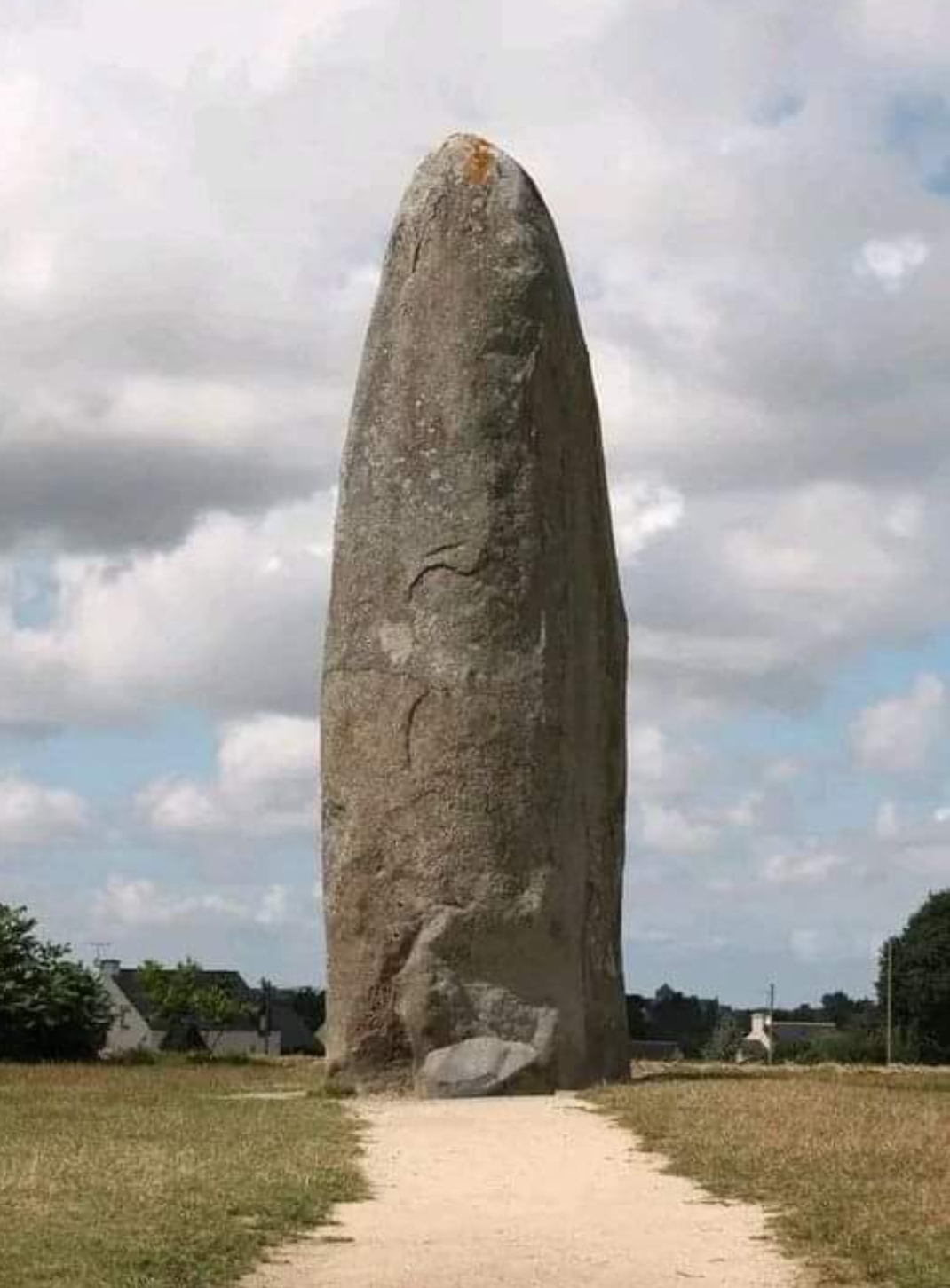The Menhir de Champ Dolent
The Menhir de Champ-Dolent stands as a silent sentinel in the Brittany countryside. This imposing megalith, a single upright stone, towers over 9 meters high, making it the largest of its kind in the region. Composed of pinkish granite, its presence evokes a sense of mystery and antiquity. Recent research suggests it was likely erected around 7,000 years ago, placing its construction in the Neolithic period.
The menhir's purpose is debated, but it likely held significant meaning for the people who erected it. It may have served as a territorial marker, a religious symbol, a gathering place, or an astronomical observatory. Regardless of its function, the Menhir de Champ-Dolent stands as a testament to the ingenuity and cultural practices of prehistoric people.
Young Earth Creationism and the Menhir
Young Earth Creationists (YEC) believe the Earth is around 6,000 years old. They explain the existence of the Menhir de Champ-Dolent by suggesting it was constructed by people shortly after the dispersion from Babel. They also propose that its seemingly older date is due to inaccuracies in dating methods or a misunderstanding of the biblical timeline.
Old Earth Creationism and the Menhir
Old Earth Creationists (OEC) accept the scientific consensus on the age of the Earth (4.54 ± 0.05 billion years) and the antiquity of human civilizations. They would view the Menhir de Champ-Dolent as evidence of human ingenuity and cultural development in the Neolithic period, thousands of years ago.
Genesis Days
YEC: Believe the "days" in Genesis 1 were literal 24-hour periods, basing this on a literal reading of the Hebrew word "yom" and the phrase "evening and morning."
OEC: Interpret "yom" as potentially referring to longer periods, citing instances in the Bible where "yom" refers to an unspecified time period.
Bible Verses
YEC: Exodus 20:11 ("For in six days the Lord made the heavens and the earth, the sea, and all that is in them, and rested the seventh day."), Genesis 1 (repeated use of "evening and morning" with each day).
OEC: The flexible nature of "yom" in Genesis 2:4.
"This is the account of the heavens and the earth when they were created, in the day that the Lord God made earth and heaven." This single verse encapsulates the entire creation week. By using "yom" in this way, the verse emphasizes the grand sweep of creation as a unified act by God, rather than focusing on the specific timeframes of individual days.
God's Glory
YEC: Emphasize God's power and creative ability in forming the world rapidly and catastrophically.
OEC: Highlight God's wisdom and majesty in creating through intricate, long-term processes over vast ages.
Reaching Consensus
Both YEC and OEC perspectives can find common ground by focusing on their shared belief in God as Creator and upholding the authority of Scripture. Ephesians 4:2 encourages believers to "be completely humble and gentle; be patient, bearing with one another in love." Open dialogue, respectful disagreement, and a focus on shared values can foster understanding and unity. Recognizing the Menhir de Champ-Dolent as a testament to human creativity within God's creation can be a point of connection.




Comments
Post a Comment